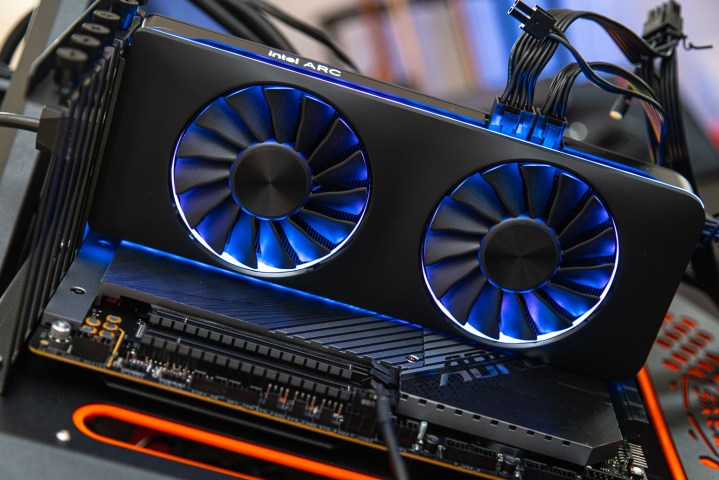Against all odds, it appears that Intel is still on course with its next-gen graphics cards, and its plans reach far into the future. A new report tells us that Intel may have ordered a large number of GPU chips from TSMC.
While Intel Arc struggles to compete against the best graphics cards, this is still great news for the GPU market as a whole — here’s why.

Compared to AMD and Nvidia, Intel is still very new to the discrete GPU market, and it only has a limited number of cards up for grabs. The range is modest, including cards like the Arc A770, Arc A750, and Arc A380. It failed to shake things up, arriving late in its respective GPU lifecycle, but it was priced competitively — on par with Intel’s plan to focus on performance per dollar instead of pure numbers.
It has long been known that Intel was planning to follow Arc Alchemist with Battlemage, and then eventually, Celestial GPUs, but all of these plans seemed a little tentative lately. That’s primarily because Raja Koduri, the previous head of Intel’s Accelerated Computing Systems and Graphics department, parted ways with Intel at the end of March.
The development of Intel Arc felt shakey enough from the beginning, with multiple delays and poor optimization upon launch. Was Koduri’s departure going to be the end of the range? Today’s report tells us otherwise, and indeed, Intel appears to be more on track than many might have expected.
As reported by Taiwan’s Commercial Times, Intel is said to have come to an exciting understanding with the world’s biggest semiconductor foundry TSMC. It expects that there will be a growing demand for consumer graphics, including those for gamers and those for professional uses, so it’s already readying its next-gen chips.

Intel Battlemage is reported to be based on the Xe2 architecture and fabricated on TSMC’s 4nm process. It will be the first to arrive — insider sources now pin the expected release date of the GPUs to be sometime in the second half of 2024. Intel Celestial will follow in the second half of 2026, based on a 3nm process and featuring Xe3 architecture.
It’s great to hear that Intel hasn’t given up on its graphics department. Unfortunately, it looks like it’ll be well over a year before it releases any new GPUs, which means it might miss the window to compete against AMD’s and Nvidia’s current lineups.
Intel may not play a big part in the current GPU market, but it’s important for it to continue. Nvidia dominates the field, and that allows it to command the prices as much as it wants to. With the growing presence of Intel and AMD, Nvidia may finally get a taste of real competition one day, and the consumers would only benefit from that.


